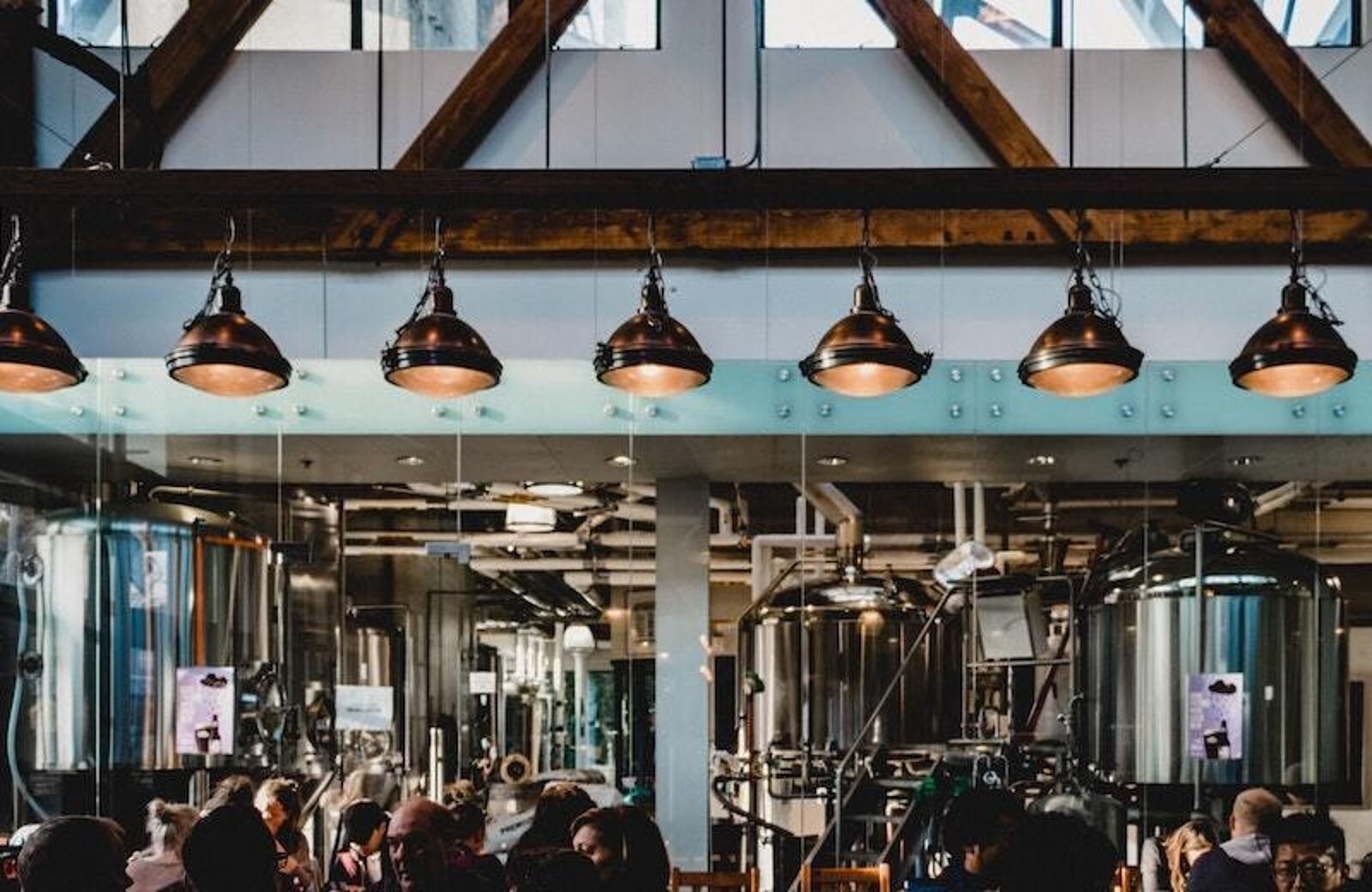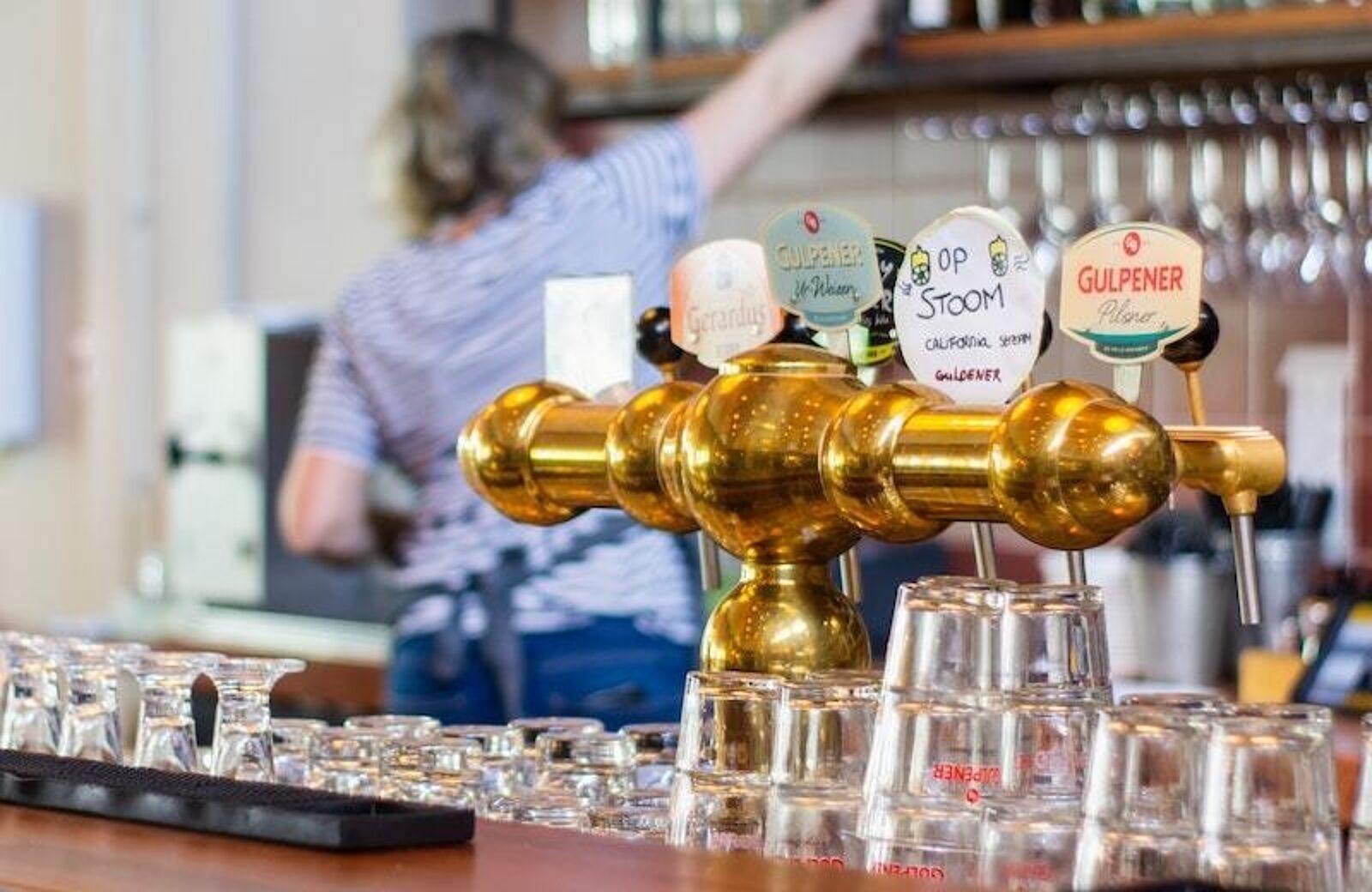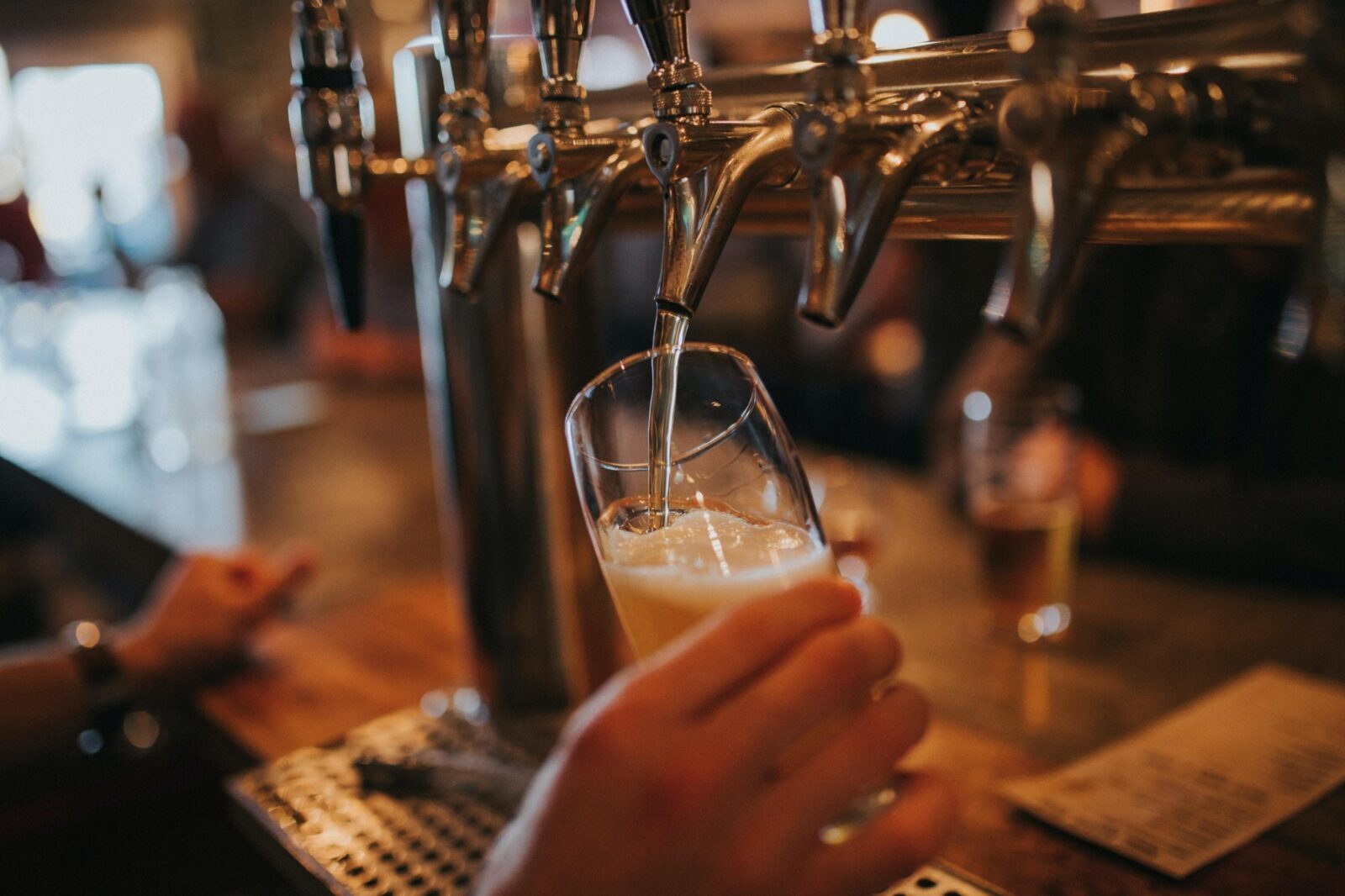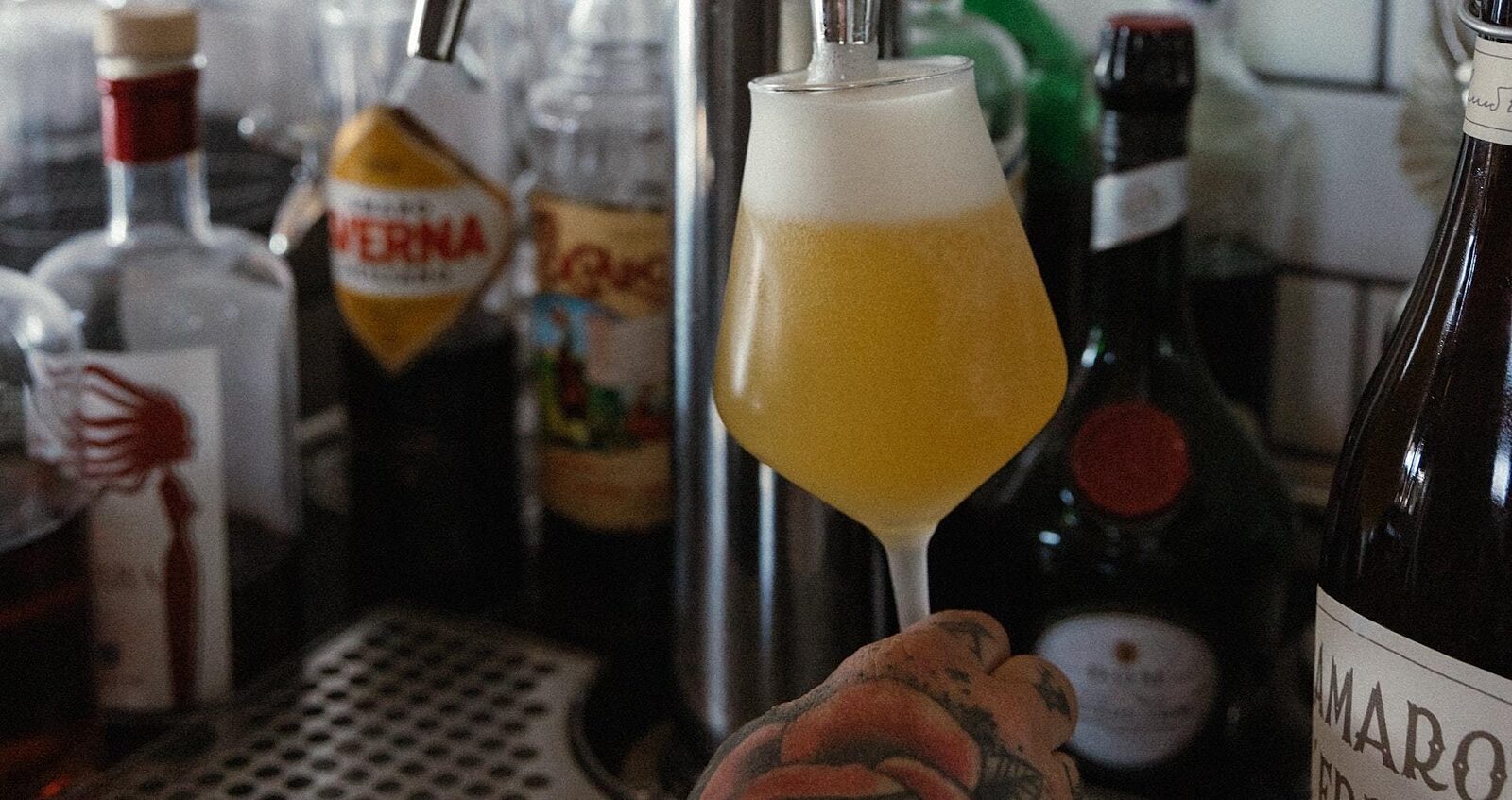
Essential Brewery Equipment List: Equipment Needed to Start a Brewery
Starting a brewery is an expensive and potentially rewarding investment – set your brewery up for success with this ultimate equipment guide.
Tyler MartinezAuthor
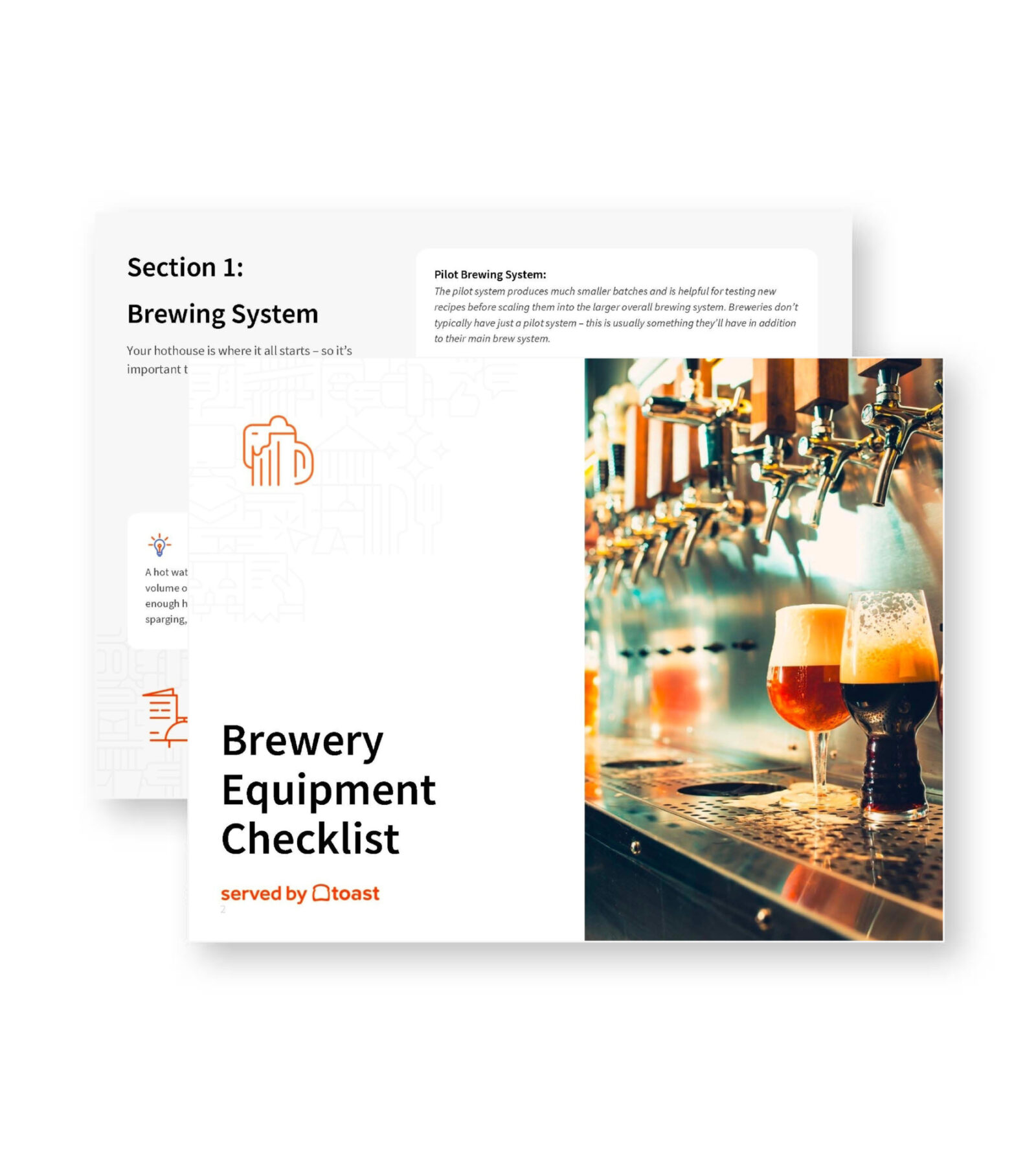

Brewery Equipment Checklist
Opening or upgrading a brewery? Don't miss any essential equipment! Download our free, comprehensive Brewery Equipment Checklist.
Get free downloadEssential Brewery Equipment List (Appliances, Tools, Essentials)
The art of brewing has evolved through technology and restaurant equipment upgrades over the centuries. Contemporary brewing equipment will have your new brewery pumping out perfectly crisp pilsners and incredible IPAs.
Many breweries open restaurants to offer beer flights and food and must invest not only in brewing equipment but also in restaurant equipment. As you write your brewery’s business plan, plan and budget for essential restaurant and brewery equipment using this guide.
Brewery Business Plan Template
Use this free template to easily create a great business plan that organizes your vision and helps you start, grow, or raise funding for your brewery.

What Equipment Do You Need In a Brewery
For your brewery, you’ll need fermentation tanks, a bottling system, and enough kegs to keep up with production.
- Brewing Systems
Pilot System
Brewing System
Fermentation Tanks
Heat Source
Brewing Accessories
- Bottling System
- Kegging System
- Safety Equipment
Gloves
Aprons
First Aid Kit
Date Labels
Sani-buckets
Bar rags
Food grade cleaning supplies
Chemical Safety Data Sheets
- Sinks
- Restaurant Point of Sale System
- Serviceware
Glasses
Coasters
Table service essentials
Paper boats, plates, or clamshells
Utensils
Napkins or linen
If you plan to also operate a restaurant kitchen to accompany your brewery and allow you to serve food, there are a few other essentials to add to the list.
Brewery kitchen equipment list
- Ovens, Ranges, and Grills
- Ventilation
- Microwaves
- Freezers and Refrigerators
- Food Prep Surfaces
- Food Prep Equipment
Knives
Cutting boards
Pots and pans
Mixing bowls
Food processors
Blenders
Storage containers and shelving
Kitchen Display System (KDS)
How much is equipment for a brewery
It can cost anywhere from $500,000 to $2 million to start a commercial brewery, depending on the size of the operation and whether you’re investing in a kitchen or bar space as well. To ensure you’ve got plenty of room in the budget for everything you need, it can be helpful to explore restaurant financing options.
Things to consider before buying brewery equipment
Investing in the right equipment for your brewery is critical to the success of your business. Decide which pieces to prioritize and which you might compromise on when budgeting for all the equipment you’ll need.
1. Quality
The quality of your brewery equipment can directly impact the taste of your product and the success of your brews on the market. Select equipment that’s high-quality and durable, researching large purchases before making any major decisions. Consider who will maintain the equipment and how comfortable they are with repairing them.
2. Space
The capacity of your brewery and bar or kitchen is limited to the space in which you operate. Many breweries operate in large warehouse spaces to allow for large batches of brews and large-scale production. Consider the space you will need for a bar or kitchen, and account for working space for your brew masters and bartenders.
3. Planning Your Kitchen
Consider consulting an expert kitchen planner to optimize the layout and efficiency of your brewery space. The ideal space will be accessible for both customers and employees, and allow your business to operate at peak efficiency.
4. Use and Cleaning
Stainless steel brewery equipment will last a long time if maintained properly. Consider establishing a relationship with a local specialized repair person. It can also help to learn a bit about how to maintain and clean your equipment. Look out for the NSF symbol on food equipment which ensures that it meets food safety certification standards.
5. Suppliers
Many towns and cities have local restaurant supply stores that, for a membership fee, offer premium ranges of commercial equipment at near-wholesale prices. Great suppliers often also offer installation, maintenance, and repairs.
Sourcing equipment is half the battle. Once you have a comprehensive list and a vision of your fully-equipped bar, start shopping around. Local restaurant wholesalers often have good deals, or you might lease from a reputable online retailer, or rent equipment until you can afford to invest.
Research your local brewery equipment store, and reach out to them to see if they can equip your business. Even if you only have a hobby brewers supply store near you, they may be able to point you in the direction of a large-scale brewing equipment supplier.
New vs. Used Equipment
New equipment might always seem like the best choice, but some expensive (and essential) pieces of equipment might be better off bought used. Consider finding an oven or deep freezer that has been maintained over the years and plan to keep it up – you’ll save up front and over the course of your venture. However, ensure you’re buying from a reputable source and ask your peers which items they chose to buy new vs. used.
6. Pricing
Pricing for brewery equipment likely won’t fluctuate much between suppliers. However, it’s still a good idea to shop around a little bit and ensure you’re getting the right price, especially for major investments.
7. Financing or Leasing
Financing or leasing equipment can be a good option to get your business started and take on less risk until you’re sure the model will succeed.
Ultimate brewery equipment checklist
1. Brewing Systems
Commercial brewery equipment is the biggest investment in your brewery. These stainless steel pieces get more expensive as they scale up, and they require regular maintenance and cleaning to keep producing beer that’s delicious and safe to drink.
Pilot System
A pilot system is a small, contained brewing system that lets you brew small batches quickly to test recipes or send microbrews to market.
Brewing System
A brewing system includes a heat source, boiling tank, and fermentation tank for the various stages of the brewing process. Some commercial brewery equipment manufacturers sell and maintain full, ready-to-brew brewery systems engineered for performance and efficiency.
You might decide to design and engineer your own brewing systems which could save you some money as long as you do the proper research.
Brewing Accessories
PH test strips, malt mills, filters, valves, and carbon monitors, among other little necessities, should be included in the budget. Be sure to plan to replace small, fragile, or easily misplaced items and keep backups of essential equipment on hand.
2. Bottling System
A bottling or canning system will let you deliver your brews to market. Invest in a bottling system that can handle the amount of production you plan to do so that there are no slowdowns. Also, consider how you’ll label products for the market to both attract customers and follow legal labeling guidelines for alcohol.
3. Kegging System
Kegging equipment and storage will let you fill and charge kegs to send to local restaurants and tap houses. It will also get you one step closer to tapping kegs for guests in your brewery space. Invest in a quality kegging system and enough space to keep kegs cold while they wait for distribution.
4. Safety Equipment
All restaurants are held to food safety standards and must have certain equipment on hand, such as:
Gloves
Aprons
First Aid Kit
Date Labels
Sani-buckets
Bar rags
Food grade cleaning supplies
Chemical Safety Data Sheets
5. Sinks
Sinks are necessary for prep, cleaning, and disposal, and in kitchens sinks must be dedicated for use. You’ll need to equip your brewery with a couple of sinks and a few more in the kitchen.
Compartment sinks
Three compartment sinks are a common way to meet food safety standards for washing and sanitizing cutlery, service ware, and kitchen equipment – wash, rinse, sanitize.
Disposal sinks
Disposal sinks, also often called bar sinks, are conveniently located to catch any liquid you need to throw out from washing or discarded drinks.
Handwashing sink
Dedicated handwashing sinks must be available for employees in a kitchen space or on the bar so that employees can maintain safe food handling standards.
6. Serviceware
Provide brewery guests with all the necessities to make their experience excellent. Choose pieces that capture the aesthetic vibe and convey the ambiance of your brewery will create a memorable experience. Also, consider which types will be most durable for consistent use by employees and customers.
Glasses
Coasters
Table service essentials
Paper boats, plates, or clamshells
Utensils
Napkins or linen
7. Restaurant Point of Sale System
Restaurant point of sale systems provide a technological answer for a lot of the complexities of operating a brewery or any restaurant business.
They provide a way to integrate inventory management, budgets, sales reports, and communication between the front- and back-of-house operations. Keep everything running smoothly with cutting edge interfaces for service and convenient logistical solutions.
Bar and Lounge POS Comparison Tool
A free, customizable Bar and Lounge POS Comparison Tool to research and compare point of sale systems in one Excel spreadsheet or editable PDF.

Essential brewery kitchen list
1. Ovens, Ranges, and Grills
Convection ovens circulate heat to ensure that your bakes are consistent and as a way to speed up bake times. Combination ovens circulate heat and create steam, perfect for baking crusty bread or steam roasting vegetables and aromatics.
A gas range will likely be your first choice for a heat source, as it’s efficient, easy to control, versatile, and reliable.
Flat ranges are sustainable, requiring very little electricity to operate for a long time and are perfect for cooking certain kinds of food – for finishing burritos and sandwiches, or cooking eggs, pancakes, and bacon.
Induction burners generate an electromagnetic current to heat a surface. Magnetic metals transfer heat the best and can be used to heat glass or other surfaces. Induction is a sustainable, versatile, space-conscious, and cost-effective option, especially if your brewery menu won’t require enough sautéing or simmering to warrant multiple burners.
2. Ventilation
Operating a kitchen requires enough ventilation to ensure that the space, and your brewery, don’t get filled with the heat and smoke from ovens and ranges. Consider the size and space of your kitchen and ensure that your ventilation system has enough power to keep smoke and hot air out of the space you or your cooks have to work in. Ventilation is crucial for providing a safe kitchen environment.
3. Microwaves
Great for reheating or quickly steaming, microwaves are powerful kitchen tools. Plan and budget for your brewery’s microwaves even though they’re inexpensive.
4. Freezers and Refrigerators
While freezers might not be necessary for a brewery, they’ll be necessary for storage in a bar or kitchen. Refrigerators are important for keeping brews cold before serving to visitors. Refrigeration units, like all equipment, require regular maintenance to keep working at peak performance.
5. Food Prep Surfaces
Your brewery and kitchen will both need clear counter space for your employees and cooks to work. Stainless steel is the most popular option in restaurant kitchens because they are durable and easy to sanitize.
6. Food Prep Equipment
The small appliances, utensils, mixing bowls, and microplanes that you’ll need for your brewery kitchen are a big consideration.
Knives
Knives are a critical prep and cooking tool, and a good chef and their knife move as one – invest in a set of knives and learn how to keep them sharp for both safety and efficiency in the kitchen. You’ll also want a sharpening stone and a honing steel to keep your investment in good condition.
Cutting boards
Quality cutting boards make a noticeable difference in the prep experience – boards with lips around the edge to keep liquid on the board or those that have handles for easy handling are restaurant equipment favorites. Kitchens often have color-coded plastic cutting boards to avoid cross-contamination.
Pots and pans
The kinds of pots and pans you use will likely be decided by your menu and your cooks’ preferences. Pots and pans are valuable, essential equipment that lasts a long time when maintained properly.
Mixing bowls
Mixing bowls come in a variety of materials that each have benefits and setbacks – plastic, stainless, ceramic, or glass. Decide which combination works for your brewery equipment list.
Food processors
Food processors are great for liquefying soups and sauces and ensure that you get an even chop or mince – a worthwhile investment.
Storage containers and shelving
Storage is always a must, for safety and organization, and the cost can add up quickly. Storing dry ingredients like flour, sugar, spices, hops, and grains have specific needs.
Consider storage for all smallwares, too. The small appliances and accessories all need a place in your back of house. Keeping things organized will help your brewers and cooks to work efficiently.
Etc.
This is probably the most important category – the rest. All the utensils and little food prep equipment add up so it’s crucial to plan and budget for them. And when thinking about tiny items that are easily misplaced, buy backups.
7. Kitchen Display System (KDS)
Kitchen display systems will let your cooks know what customers are ordering in real time. Your KDS sends orders from a server’s handheld or central terminal to the kitchen or the bar. They’re integrated with your brewery’s point-of-sale system to keep everything in order and maintain smooth, efficient service.
Related Brewery Resources
Restaurant Opening Calculator
This calculator lays out some of the fundamental financial costs of opening a restaurant, so you can start planning and bring your dream restaurant to life.

Is this article helpful?
DISCLAIMER: This information is provided for general informational purposes only, and publication does not constitute an endorsement. Toast does not warrant the accuracy or completeness of any information, text, graphics, links, or other items contained within this content. Toast does not guarantee you will achieve any specific results if you follow any advice herein. It may be advisable for you to consult with a professional such as a lawyer, accountant, or business advisor for advice specific to your situation.
Read More
Subscribe to On the Line
Sign up to get industry intel, advice, tools, and honest takes from real people tackling their restaurants’ greatest challenges.

